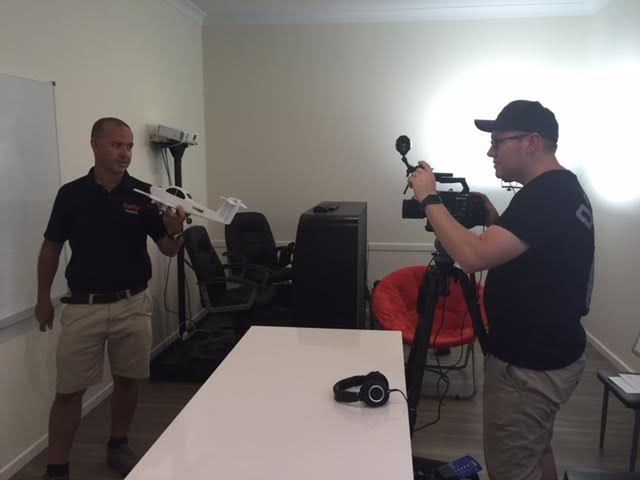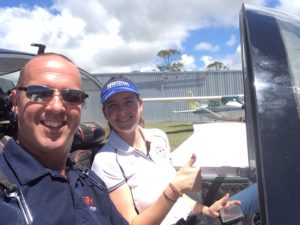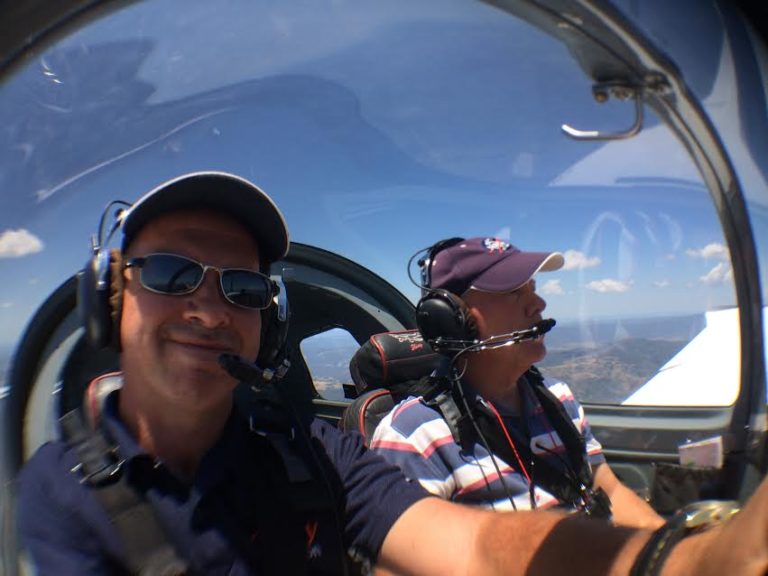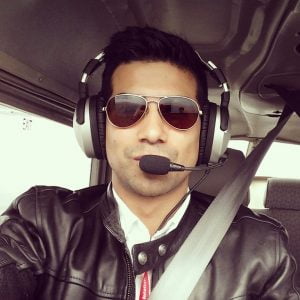Your future is in your hands
I hear a lot of individuals telling me that becoming an employed Airline Pilot is hard and that training is hard and getting a job is hard. I’m amazed that these individuals are able to actually get out of bed in the morning.
Yes, life can be hard, but what’s the alternative? If you believe everything is hard then you are more likely to give up before you begin.
Why do you want to be an Airline Pilot?
This is the first question you need to ask yourself before you begin your journey. A not so good reason for wanting to become a pilot might be because the pay is good and it will be cool.
A better reason might be because you have always been obsessed with aircraft, you just love flying and you can’t imagine doing anything else other than sitting in a high tech plane and being responsible for the lives of many individuals, helping them reach their loved ones safely.
If your reason ‘why’ is a good reason and you are passionate about flying and becoming a pilot, then I can honestly say the road to becoming an Airline Pilot will not be that hard. I believe that the future is very exciting if your goal is to become an airline pilot.
The news about the future pilot shortage is correct
Boeing and Airbus updated their forecast this year to conclude that around 600,000 new pilots will be required to be trained over the next 20 years to replace retiring airline staff and growing airline fleets. The Asia Pacific region will need around 250,000 new pilots in this time period.
I am a business owner and Entrepreneur and spend a considerable amount of time researching future growth markets. I believe the Asia Pacific forecast is spot on. In fact, one could compare the Asia Pacific region to America post-World War II, when the Airline industry grew like crazy after the disposable income of the middle classes increased and the costs of airline travel decreased. The same rapid change is happening right now in Asia, however the population is about ten times that which the USA had in the fifties (that is right: ten times!!).
If you want to stay on the East Coast of Australia and don’t want to move to find work then you may find it harder to gain employment. All the airline pilots I know who secured a job shortly after their flight training, went overseas for work.
So will there be jobs, but you may have to travel to find that first airline job.
Yes, but…
I dislike ‘Yes, but’ people. Basically they are saying ‘Yes, I agree with you… but I have come up with a reason not to agree with you’.
So you have always dreamt of becoming an Airline Pilot and you have probably done a bit of internet searching and soon realised that the cost of training could be anywhere from $55,000 to $120,000.
Wow! Unless you have just received an inheritance, or your parents are rich, this is where your research into becoming an Airline Pilot probably ends. This is where the negative thinking can become so powerful.
Yes, but I don’t have the money
Yes, but I don’t have rich parents
Yes, but I might not get a job
Yes, but I might be no good
Yes, but I don’t want to move overseas
The list goes on and on and on…
I want you to get into the habit of changing ‘Yes but’ to… ‘Yes, I can!’
Yes I can!
Yes, I can find the money somehow.
Yes, I can become an Airline pilot if I work hard enough.
Yes, I can achieve my dreams if I just keep persisting.
Yes, I don’t mind living in Asia for five years if it means I can be an Airline Pilot earlier.
Ok you get the point..
You can always get what you want – the only variable is the time it takes.
You’re most likely to have never seen more than $10,000 in your bank account so the thought of being able to afford $80,000 to complete your flight training seems like a pipe dream. I am about to show you that not only is it possible for anyone to be able to afford flight training but it is also possible for anyone who has the right attitude to secure a job as an Airline Pilot.
I am going to show you how you can obtain your Commercial Pilots licence with all the necessary endorsements within four years without the help of your parents, the government or the bank.
Think of your flight training as a University Degree
Most university degrees are around three to four years in duration. If the majority of the population accept that it’s going to take an individual four years to earn a degree then why would it be any different to learn to be an airline pilot? If you leave school at 18 you will still only be 22 years of age when you complete your flight training – the same as most other graduates.
Get a full-time job that pays at least $50,000 income and live in shared accommodation or move back home with your parents/relatives
It would be nice if you could just jump directly into full-time flight training straight away then land your dream job with an airline within one year. I would also like to own my own beachfront property with ocean views but I know it is not going to happen within 12 months (I have a ten year plan for that one.)
Why get a full-time job that earns $50,000?
The reason is simple, so you can still pay rent and food and bills and enjoy life a bit while you are training part time. By sharing accommodation and living at home you can reduce your weekly expenses. By earning $50,000 per year you should be able to put around $20,000 per year towards your flight training costs. Over four years that is around $80,000.
That’s right, even with a medium income job, within four years you can pay for your own flight training and have no debt at the end of it (unlike most uni students). What sort of job should you get? I would recommend some job where you can learn some skill that will assist you in aviation. Sales is a good choice because you will learn to sell yourself.
Another great idea is to get an admin or ground staff job with an airline or flying school or charter company. You might apply to be a flight attendant, ground baggage handler, refueller or front office admin. If you’re in the industry you can learn valuable inside information plus develop a network of key contacts for later when you are looking for a job. I know plenty of Airline Pilots who started off as ground crew for airlines.
Once you get a job that pays around $50,000, the plan is very simple:
Year 1
- Upgrade your computer if you need to and turn it into a simple Flight Simulator (use X Plane). By having your own makeshift flight sim, you will be able to practice manoeuvres, and eventually instrument flight, at home in your own time at no cost.
- Study for your Recreational theory exams and Private Pilot Licence exams in your own time and sit the exams.
- You may also find our online flight lessons helpful. For less than half the cost of a one hour real lesson, you can watch the lessons in standard or in 360-degree video as man times as you need. The lessons cover everything you need to know for your RPC plus there are lots of bonus videos dealing with emergency procedures and flight tests etc Our students claim that the lessons have sped up their learning and saved them money on real flying lessons.
Year 2
- Find a reputable flight school which offers part-time Commercial Pilot Licence training and preferably has Recreational Aircraft that you can start your training in (to save hourly costs).
- Complete your training one day per week and fly between one to two hours each time. Pay for each lesson as you go.
- Complete your Recreational Pilot Certificate (approx $5400 through GoFly) and Navigation endorsement (approx $4000 through GoFly) in a Recreational Aircraft to save on training costs.
Year 3
- Complete your RPL conversion and controlled Airspace endorsement on a four- seat aircraft like a Cessna 172
- Start studying at night for your CPL exams
- Start accumulating Solo command time in both a Recreational Aircraft and a four- seater aircraft.
Year 4
- Sit your CPL theory exams (and resit if required)
- Start studying for ATPL subjects
- Complete your CPL Flight Training with twin-engine instrument included
- Complete your Instructor rating Recreational and General Aviation
- Apply for airline jobs in Australia and Asia at the end of the year
- Keep $10,000 and offer to pay for Jet type endorsement if required by an Airline
If you put the work in, are smart with what school you choose and what aircraft type you learn to fly on, you can achieve all of this for around $80,000.
In addition
I would also recommend doing a part-time course in how to speak Chinese. Most jobs will be coming out of China over the next ten years. While it is not a requirement to speak Chinese in order to obtain a job in Asia, it will put you ahead of your competition and show your future employee that you have gone the extra mile.
A lot of my students say to me, ‘That’s great but I’m happy where I am, I don’t want to go overseas’. This is a real shame, as living in a different country will open their eyes to new cultures and experiences. Obviously their reason ‘why’ is not great enough. They may well get a job if they stay in Australia but options and opportunities are far greater if you’re willing to travel and relocate for a while.
Other options
The good news is that even if you do not want to go overseas, or if you miss out on a job initially, you can still look for a job a flight Instructor on the east coast of Australia. Most Airlines in Australia now prefer you to have an Instructor rating so that they can use you for check and training when you have been with the company for a while. By obtaining your Instructor rating during your course it allows you to obtain a job in general aviation while you are applying for airline jobs. It basically gives you more options and allows you to earn an income and fly. You might even love it and decide to stay being a professional Instructor.
Leave $10,000 aside for your ‘type rating’ training
As part of this plan I allow $10,000 at the end of your training to allow you to pay for your own ‘type rating’. What is a type rating? It is specific training to allow you to fly a particular ‘type’ of complex aircraft such a Boeing 737. This can be done in a simulator for about $10,000.
When applying for an airline, some airlines require you to pay for your own type rating. If you succeed in getting through your initial interviews you will be in a better position as you already have your own funds to pay for your own type rating.
No more excuses
I hope by now you have come to the realisation that becoming an airline pilot is not only achievable for anyone, but is also a realistic career path if you have a big enough ‘why’.
I decided to open and run a Flight School instead of joining an airline, but I have worked with many charter pilots and instructors over the years who have gone on to secure jobs by following my simple plan above.
A lot of other flight schools will try to tell you that the above plan is not possible financially. The reason is simple: their revenue model has been designed for them and not YOU! Do your research, go onto the CASA website and research hourly requirements. I know flight training costs can be almost halved if you do your research and chose the right school. I know it’s possible because I did the above plan myself (but left Charter flying and decided to buy and run a flight school).
All it takes is belief in yourself, persistence and time.
Happy and safe flying,
Damien Wills
CEO, GoFly Group
P.S. If you are interested in obtaining your CPL through GoFly Aviation, we are currently offering a great value deal for approx $55,000. You can start any time. Request a copy of our pricing and syllabus by emailing us at goflyaviation@gmail.com or feel free to call me on 0426 282 226 if you have any questions. GoFly does not offer VET fee. For information about personal loans, visit GoFly Finance. For our current deals on Recreational Pilot Certificates, keep an eye on our Special Offer page. Click here for information about the Bachelor of Aviation at USQ. Click here to view our Boeing 737 simulator.
Click on this link to read further blogs by Damien.








